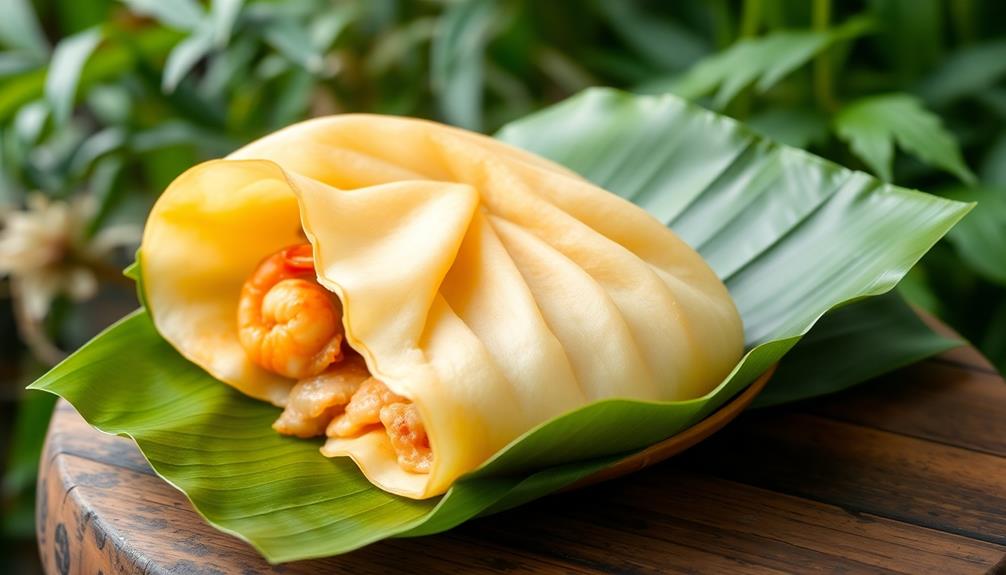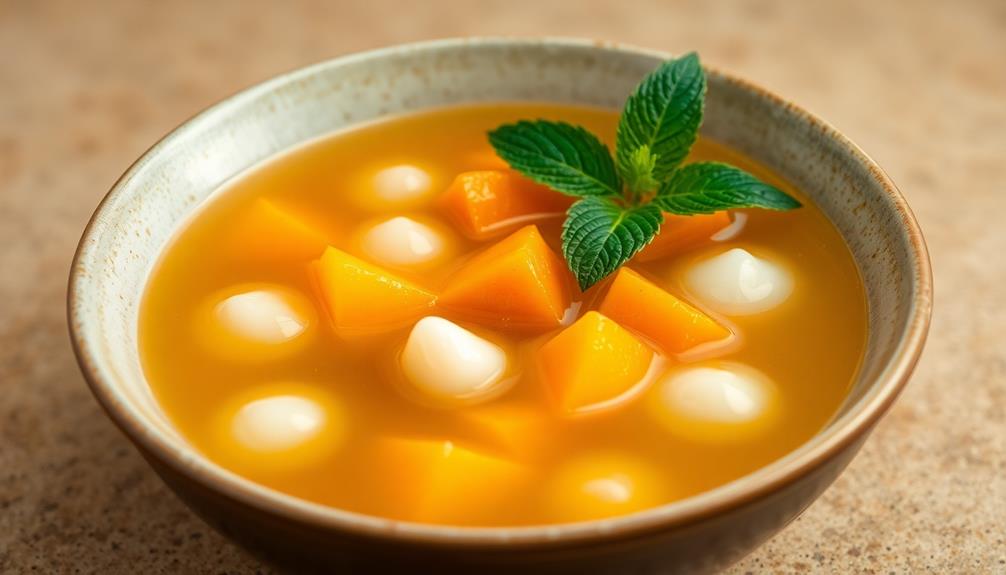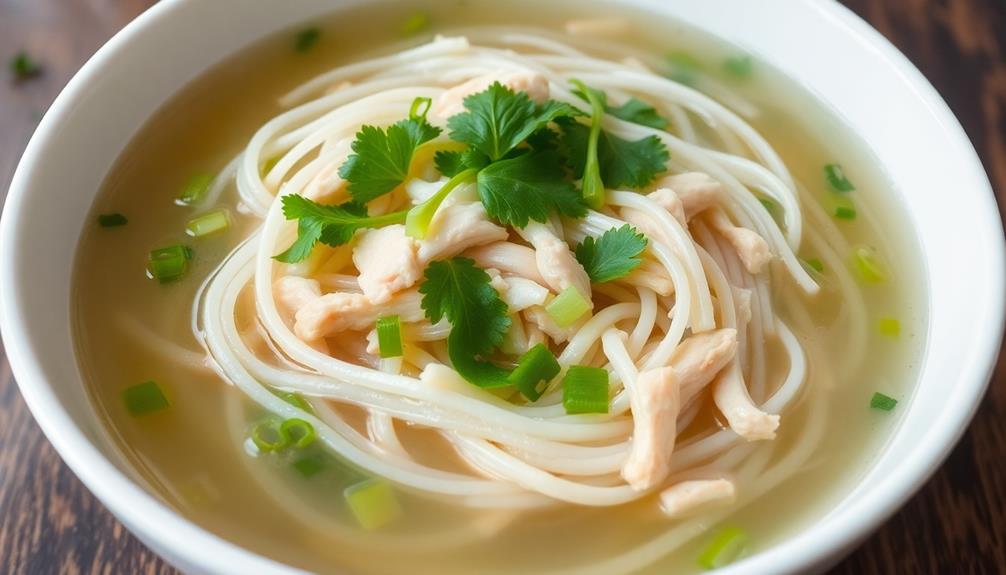Whip up the savory goodness of Vietnamese Banh Nam in minutes! This treasured rice cake from central Vietnam boasts a soft, pillowy texture that's perfect for enjoying as a snack or part of a larger meal. Crafted with just a few simple ingredients like glutinous rice flour, pork, shrimp, and aromatic seasonings, then wrapped in fragrant banana leaves, Banh Nam offers a delightful culinary adventure. Whether you shape them into triangles, crescents, or even animals, the creative possibilities are endless. Get ready to dive into the vibrant flavors that make this traditional Vietnamese delight so special. The beauty of Banh Nam lies not only in its rich flavors but also in the joy of its preparation, bringing loved ones together in the kitchen. While this dish has its own unique charm, it shares a comforting familiarity with other Vietnamese classics like banh duc steamed rice cake, celebrated for its silky texture and subtle taste. Pair your Banh Nam with a tangy dipping sauce or savory toppings to elevate the experience even further!
Key Takeaways
- Prepare a quick and flavorful Banh Nam with just 2 cups of glutinous rice flour, 1 cup of water, and a savory pork and shrimp filling.
- Streamline the process by blending the rice flour and coconut milk into a smooth batter, then steaming it for 15-20 minutes.
- Elevate the presentation by wrapping the rice mixture in banana leaves, folding it into desired shapes, and serving it warm with dipping sauces.
- Customize the filling ingredients to suit personal preferences, adding depth of flavor and texture to the traditional Vietnamese dumpling.
- Engage family and friends in an interactive cooking experience, promoting skill development and creating cherished memories through the shared preparation of Banh Nam.
History

Originating from the ancient Champa kingdom, banh nam is a traditional Vietnamese savory dumpling that has endured the test of time. This beloved delicacy has been enjoyed for generations, with its roots tracing back to the thriving coastal communities of central Vietnam.
Over the centuries, the recipe has been passed down, evolving to reflect the diverse flavors and techniques of the region.
Today, banh nam remains a cherished part of Vietnamese culinary heritage. The dumplings are crafted with care, their delicate wrappers enveloping a savory filling of pork, shrimp, and fragrant herbs.
The steaming process lends them a soft, pillowy texture that melts in your mouth. Whether served as a snack or a centerpiece of a meal, banh nam captivates the senses with its harmonious blend of flavors and textures.
Recipe
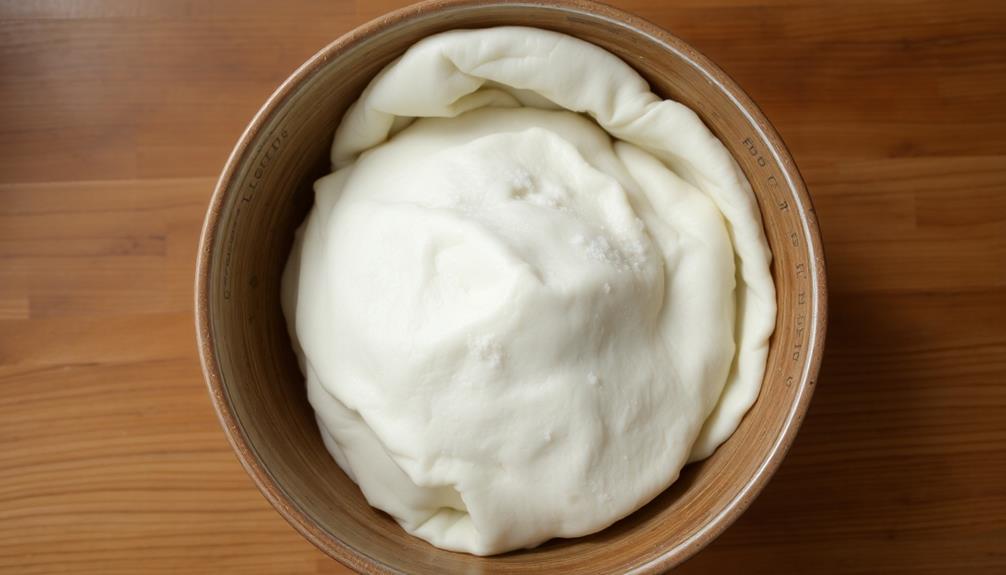
Banh Nam is a traditional Vietnamese steamed rice cake that originates from the central region of Vietnam. This delicate and flavorful dish is often enjoyed as a snack or part of a larger meal. The unique shape and texture of Banh Nam make it a delightful culinary experience.
The key to authentic Banh Nam lies in the careful preparation of the ingredients and the steaming process. The rice batter must be perfectly balanced to achieve the desired soft and sticky texture, while the savory pork and shrimp filling adds a delightful contrast.
Ingredients:
- 2 cups of glutinous rice flour
- 1 cup of water
- 1/2 teaspoon of salt
- 1/2 pound of ground pork
- 1/2 pound of shrimp, peeled and deveined
- 2 cloves of garlic, minced
- 1 tablespoon of fish sauce
- 1 teaspoon of sugar
- 1/4 teaspoon of black pepper
- Banana leaves, cut into 4-inch squares
To Prepare:
In a large bowl, combine the glutinous rice flour, water, and salt. Knead the mixture until it forms a smooth and pliable dough. Cover and let it rest for 30 minutes.
In a separate bowl, mix the ground pork, shrimp, garlic, fish sauce, sugar, and black pepper until well combined.
To Assemble and Cook:
Place a square of banana leaf, shiny side down, on a flat surface. Scoop a heaping tablespoon of the rice dough onto the center of the leaf and flatten it into a round shape. Place a spoonful of the pork and shrimp filling in the center.
Fold the banana leaf over the filling to create a half-moon shape, then fold the edges to seal the package. Steam the Banh Nam for 20-25 minutes until cooked through.
Tips:
For best results, use fresh and high-quality ingredients. The banana leaves can be soaked in water for a few minutes to make them more pliable. Serve the Banh Nam warm, accompanied by a dipping sauce of your choice, such as fish sauce, soy sauce, or chili-garlic sauce.
Cooking Steps

First, you'll need to soak the glutinous rice overnight.
Then, blend the coconut milk and rice flour together until smooth.
Next, it's time to steam the rice mixture until it's cooked through.
Step 1. Soak Glutinous Rice Overnight
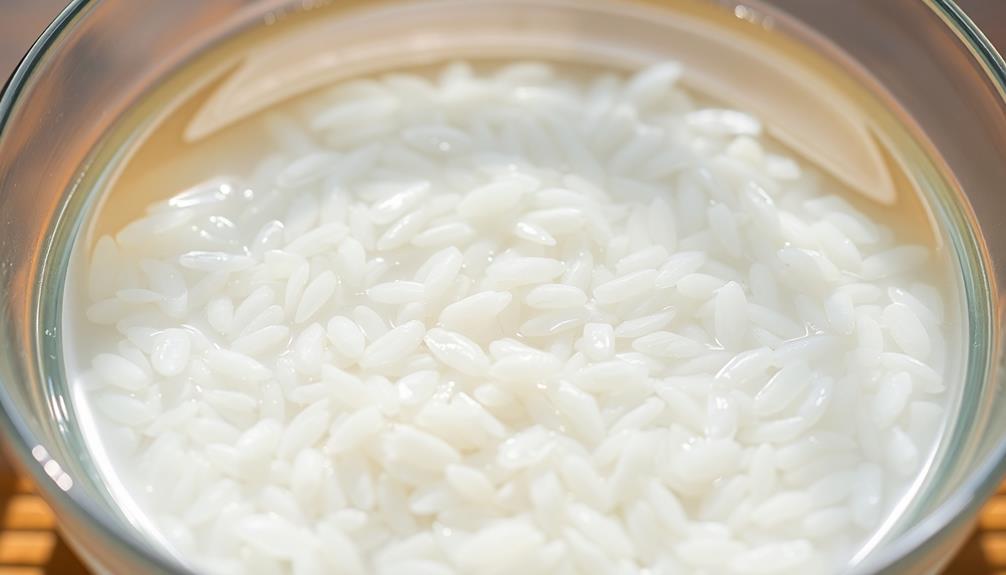
To begin, you'll want to soak the glutinous rice overnight. This important step helps soften the grains, making them easier to work with later on.
Simply grab a large bowl, fill it with the rice, and then add enough water to cover the grains by a couple of inches. Let it sit on your kitchen counter for at least 8 hours, or even overnight if you have the time.
After the soaking is done, you'll need to drain the rice. Use a fine-mesh sieve or colander to gently strain out the water. Shake the sieve a few times to remove any excess liquid.
Now your rice is ready for the next step in the Banh Nam-making process! Get excited, because the savory goodness is just around the corner. With a little patience and these simple preparations, you're well on your way to creating an authentic Vietnamese delicacy right in your own kitchen.
Step 2. Blend Coconut Milk and Rice Flour
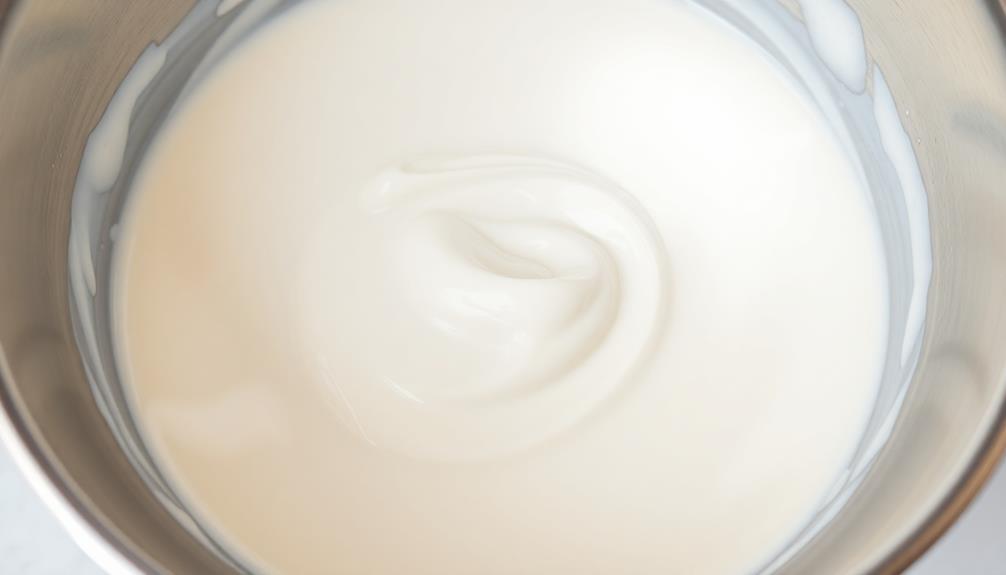
Next, you'll need to blend together the coconut milk and rice flour. This creamy mixture will be the base for your savory Banh Nam.
Grab your blender and pour in the coconut milk. Then, add the rice flour and give it a good whirl until it's smooth and thoroughly combined. Don't be afraid to scrape down the sides to ensure everything gets mixed in nicely.
The coconut milk adds a lovely richness, while the rice flour helps to thicken the batter. You want it to have a pourable, pancake-like consistency. If it seems too thick, you can always thin it out with a splash more coconut milk. Just be sure to blend it well after any adjustments.
Once you've got your coconut-rice mixture ready, it's time to move on to the next step – steaming the Banh Nam. Get excited, because you're one step closer to enjoying this delicious Vietnamese delicacy!
Step 3. Steam the Rice Mixture
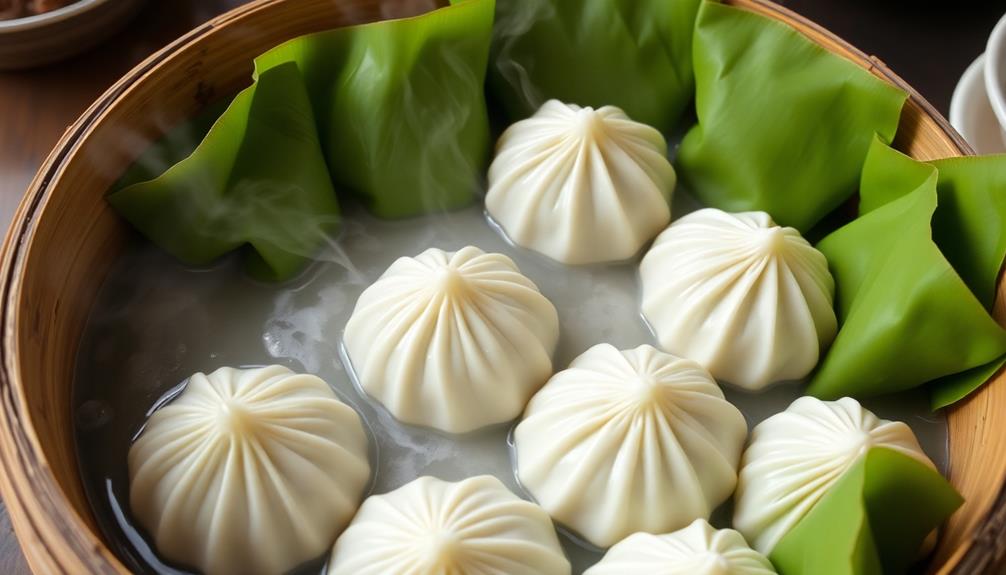
Once you have your coconut-rice batter ready, it's time to steam the Banh Nam.
Grab your trusty bamboo steamer and set it up over a pot of simmering water. Make sure the water doesn't touch the bottom of the steamer, as you don't want your Banh Nam to get soggy.
Carefully pour the batter into the steamer trays, filling them about 3/4 full. This will give the Banh Nam enough room to expand as they cook.
Cover the steamer with the lid and let the magic happen. Steam the Banh Nam for about 15-20 minutes, until they're firm to the touch and a toothpick inserted comes out clean.
Once they're done, remove the lid and let the Banh Nam cool slightly before serving.
The delicate, fluffy texture and aromatic coconut flavor will have your taste buds doing a happy dance. Serve these savory Vietnamese delights warm, and get ready to enjoy the authentic flavors of Vietnam in your own kitchen.
Step 4. Wrap Rice Mixture in Banana Leaves
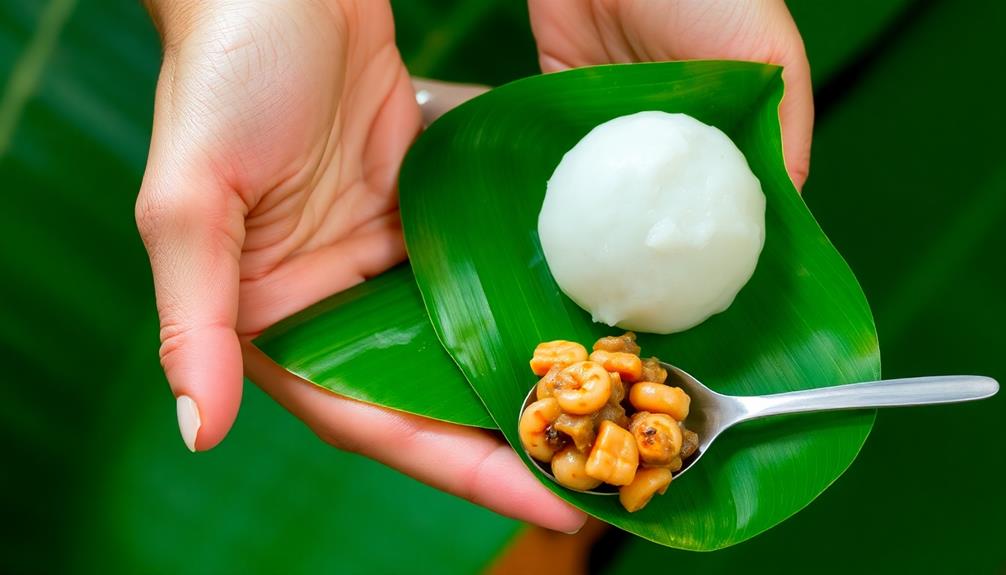
Having steamed the rice mixture, it's time to wrap the Banh Nam in banana leaves.
First, grab a fresh banana leaf and place it shiny-side down on your work surface. Spoon a couple of tablespoons of the savory rice mixture onto the center of the leaf.
Fold the sides of the leaf over the filling, then roll it up tightly to enclose the goodness inside. Secure the bundle with a thin strip of the leaf or a toothpick.
Repeat this process until you've used up all the rice mixture. Don't be afraid to get creative – you can try different leaf shapes or even layer the leaves for a prettier presentation.
The key is to wrap each Banh Nam snugly so the flavors stay locked in.
Once you've wrapped all your tasty parcels, you're ready to steam them to perfection. Get ready for the mouthwatering aroma to fill your kitchen!
Step 5. Fold Banh Nam Into Desired Shapes

With your banana leaf-wrapped parcels ready, it's time to get creative and fold them into your desired shapes. The classic banh nam silhouette is a delightful triangle, but you can get as playful as you like!
Lay the leaf on a flat surface, then spoon the rice mixture into the center. Bring the sides up and over the filling, forming a little package. Secure the leaf with a toothpick or string, tying it into a neat bow.
For a fun twist, try making little rolls by wrapping the leaf around the filling like a burrito. Or, for an elegant look, fold the leaf into a simple rectangle. Get the kids involved – they'll love helping shape the banh nam. The options are endless!
Once you've crafted your edible artworks, arrange them on a platter and get ready to enjoy the fruits of your labor. These handheld treats are perfect for sharing with family and friends at your next Vietnamese-inspired feast.
Final Thoughts
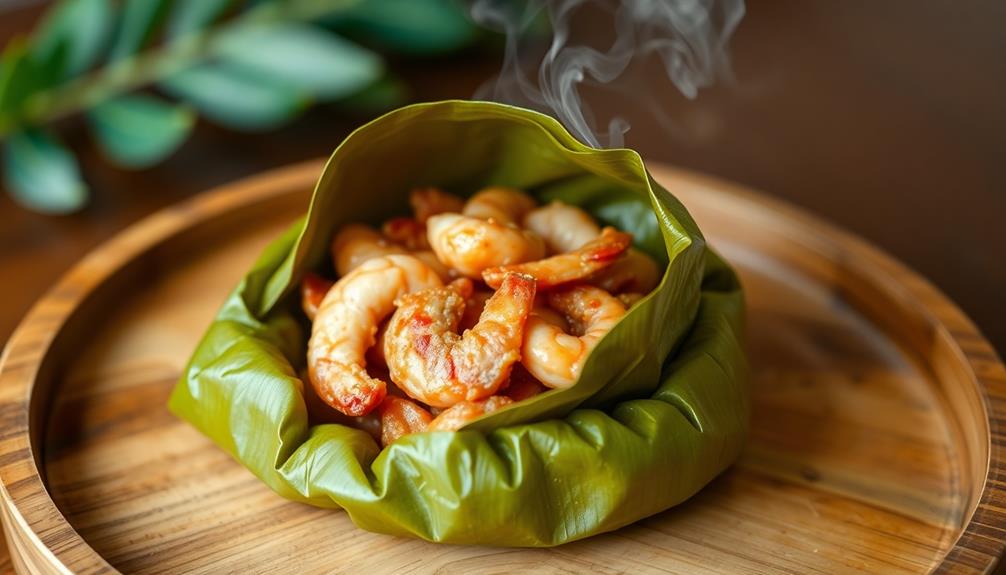
Now that you've mastered the art of making Vietnamese Banh Nam, what's next? The possibilities are endless! You can experiment with different fillings, like savory pork or tangy shrimp.
Or, get creative with the shapes – fold them into neat triangles, crescent moons, or even playful animals. Banh Nam are the perfect canvas for your culinary imagination.
Don't be afraid to share your skills with friends and family. Gather everyone around the table and make it a fun, interactive experience. Teach the little ones how to fold the dumplings, and let them get their hands dirty.
It'll be a delicious way to bond and create lasting memories.
Beyond the kitchen, consider giving Banh Nam as thoughtful gifts. Wrap them up in colorful banana leaves and present them to neighbors, coworkers, or loved ones.
They'll be touched by your homemade touch and delighted by the authentic Vietnamese flavors.
Frequently Asked Questions
Where Can I Purchase the Specialized Banh Nam Mold?
You can purchase specialized banh nam molds online from Asian grocery stores or cooking supply retailers. Many offer a variety of mold sizes and styles to suit your preferences for making this traditional Vietnamese dish.
How Do I Store Leftover Banh Nam?
You can store leftover banh nam in an airtight container in the fridge for up to 3 days. Reheat them in the microwave or oven before serving to restore their fresh, savory flavor.
Can I Substitute Any Ingredients in the Recipe?
You can certainly substitute some of the ingredients in the Banh Nam recipe to suit your tastes or accommodate dietary restrictions. However, be mindful that changes may affect the authentic flavors and textures of this traditional Vietnamese dish.
What Is the Difference Between Banh Nam and Banh Chung?
While banh nam and banh chung are both traditional Vietnamese rice cakes, banh nam is a flat, savory cake typically filled with meat or shrimp, while banh chung is a square-shaped, sticky rice cake often associated with Lunar New Year celebrations.
How Do I Reheat Banh Nam Without Losing the Texture?
To reheat banh nam without losing its texture, you can steam it for a few minutes or warm it in the oven at a low temperature. Avoid microwaving, as it can make the texture tough and dried out.
